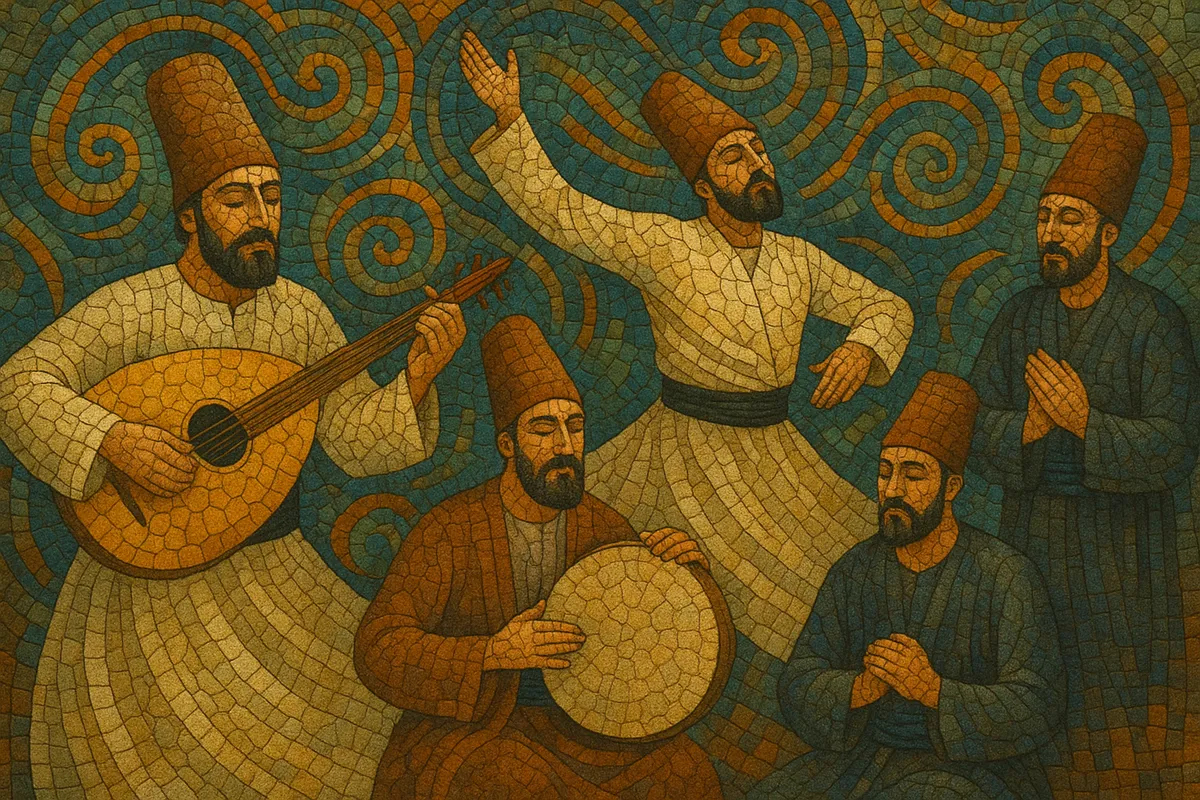Sufi is a devotional musical tradition rooted in Islamic mysticism that seeks to induce remembrance of the Divine (dhikr) and transport performers and listeners toward spiritual ecstasy (wajd). It is not a single uniform style, but a family of practices that vary across regions—most notably Persian/Iranian, Anatolian/Turkish (Mevlevi), Arab, and South Asian (qawwali, kafi).
Musically, Sufi repertoire tends to revolve around repetitive, mantra-like refrains, call-and-response between lead and chorus, and gradual intensification over cyclical rhythms. Melodic language draws from regional modal systems such as the Persian dastgāh, Ottoman/Turkish makam, and South Asian raga, and is often supported by drones.
Texts are central: poetry by mystic masters like Rumi, Hafez, Bullhe Shah, and Amir Khusrau is sung in Persian, Urdu, Punjabi, Arabic, Turkish, and other languages. Instrumentation varies by locale—harmonium, tabla/dholak, tanpura, and clapping in South Asia; ney, kudüm, bendir, and tanbur in Turkey; oud and frame drums across the Arab world—yet the unifying aim is spiritual uplift and inner transformation.
Sufi musical practice emerges from the wider Sufi tradition of sama (spiritual audition) and dhikr (remembrance), which crystallized between the 12th and 13th centuries across Greater Iran and the eastern Islamic world. The performance of sung poetry—often metaphoric love verses aimed at the Divine—was cultivated alongside contemplative practices in lodges (khānaqāh/tekke/dergâh). Early Persian mystic poets such as Rumi and Hafez provided a textual backbone that musicians set to regional modal systems.
The 20th century saw Sufi music move from lodge and shrine contexts to radio, records, and concert halls. Ensembles such as the Sabri Brothers and later Nusrat Fateh Ali Khan brought qawwali to global stages. In Turkey, ney virtuosi and ceremonial ensembles recorded the Mevlevi ayin. Meanwhile, state cultural policies alternately restricted and preserved Sufi practice in various countries, shaping public presentation.
World-music circuits, festivals, and media platforms (e.g., Coke Studio) amplified Sufi performance and catalyzed crossovers—Sufi rock, orchestral projects, and electronic fusions. While some innovations expand audiences, many artists continue to emphasize the music’s devotional core: repetition, collective participation, and the ethical intent of remembrance.
Begin with intention (niyyah): Sufi performance serves remembrance (dhikr). Use repetitive, memorable refrains and gradual dynamic build-ups to invite collective participation and trance-like focus. Favor call-and-response between a lead singer and a chorus.


